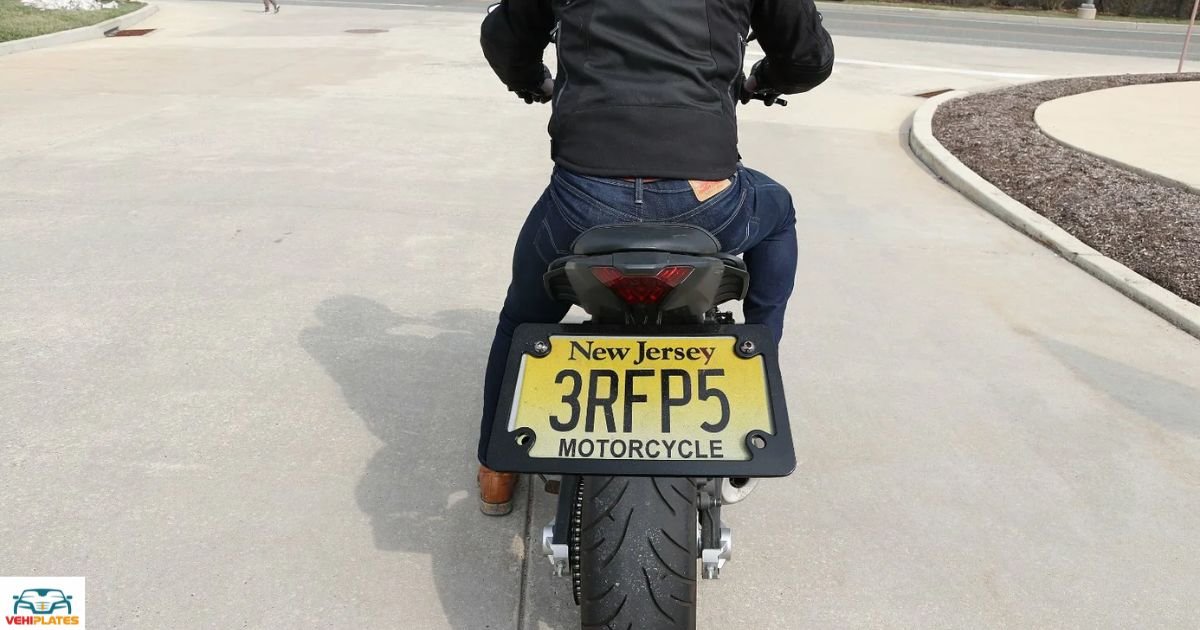Motorcycle license plates, like those for automobiles, serve as crucial identification markers for vehicles on the road. Due to the smaller size of motorcycles compared to cars, their license plates often differ in size and dimensions. Let’s delve into the specifics of motorcycle license plate sizes, regulations, and considerations.
Regulations and Standards
In various jurisdictions worldwide, authorities regulate the size and dimensions of motorcycle license plates to ensure visibility, readability, and adherence to legal requirements.
These regulations typically cover factors such as plate dimensions, characters’ size, spacing, and placement. Here are some common standards:
Dimensions: Motorcycle license plates are generally smaller than those for automobiles. While specific dimensions vary by region, they typically range from 4 inches by 7 inches to 6 inches by 10 inches.
Characters Size: Regulations often specify the minimum height and width of characters on motorcycle plates to ensure readability from a distance. Common requirements include characters being at least 2 to 3 inches tall and 1 to 1.5 inches wide.
Spacing: Proper spacing between characters is crucial for clarity and recognition. Regulations typically dictate the minimum distance between characters to prevent confusion or misinterpretation.
Variations by Region

Motorcycle license plate sizes can vary significantly depending on the country or state’s regulations. Here’s a brief overview of how different regions approach motorcycle license plate sizing:
United States
| State | Dimensions (inches) |
|---|---|
| California | 4 x 7 |
| Texas | 4 x 8 |
Europe
| Country | Dimensions (inches) |
| United Kingdom | 9 x 7 |
| Germany | 8.7 x 6.3 |
Importance of Size and Visibility
The size of a motorcycle license plate plays a crucial role in its visibility on the road. A plate that is too small may be difficult for other motorists or law enforcement officers to read, potentially leading to safety hazards or legal issues. Conversely, oversized plates can detract from the motorcycle’s aesthetics and may not fit properly on certain models.
Visibility Considerations

Traffic Enforcement: Law enforcement officers rely on license plates to identify vehicles and enforce traffic laws. A properly sized and visible license plate facilitates this process and ensures compliance with regulations. When a license plate becomes invalid or expired, it is often referred to as a dead license plate.
Safety: A motorcycle’s license plate serves as a means of identification in the event of accidents or traffic violations. A clearly visible plate can aid authorities in determining ownership and resolving disputes.
Practical Considerations
When considering the size of a motorcycle license plate, riders should also take into account practical factors such as installation, aesthetics, and legal compliance.
Installation and Compatibility
Mounting Options: Motorcycle license plates can be mounted in various locations, including the rear fender, side mounts, or swingarm. The size and shape of the plate must align with the chosen mounting location to ensure secure attachment and proper visibility.
Aftermarket Modifications: Some riders may opt for aftermarket license plate holders or frames to enhance the aesthetics of their motorcycles. When selecting these accessories, it’s essential to choose options that accommodate the size of the license plate while complying with legal requirements.
FAQ’s
How do I know the size of a motorcycle license plate I need?
Motorcycle license plate sizes vary by region, but they generally range from 4 inches by 7 inches to 6 inches by 10 inches.
Can I use a smaller license plate size for my motorcycle?
Using a smaller license plate size than what’s regulated in your area may lead to legal consequences, such as fines or citations.
Are there any specific requirements for characters on a motorcycle license plate?
Yes, there are regulations specifying the minimum height and width of characters to ensure readability, typically around 2 to 3 inches tall and 1 to 1.5 inches wide.
Conclusion
The size of a motorcycle license plate varies depending on regional regulations and standards. While smaller than typical car plates, motorcycle plates must adhere to specific dimensions to ensure visibility, readability, and legal compliance.
Riders should familiarize themselves with local regulations and choose plates that meet both aesthetic preferences and practical considerations.
By selecting the appropriate license plate size and ensuring proper installation, motorcyclists can enhance safety, legality, and the overall riding experience on the road.










